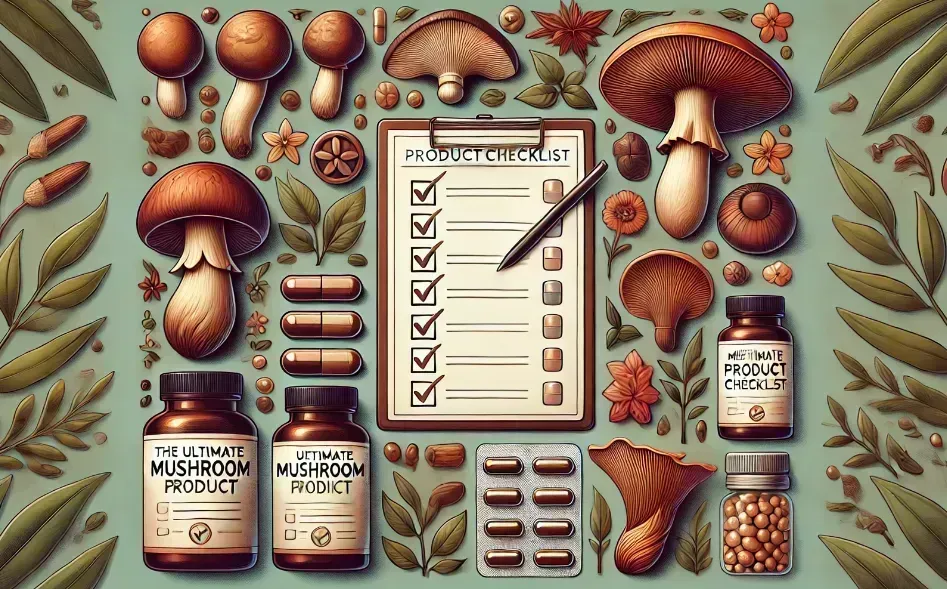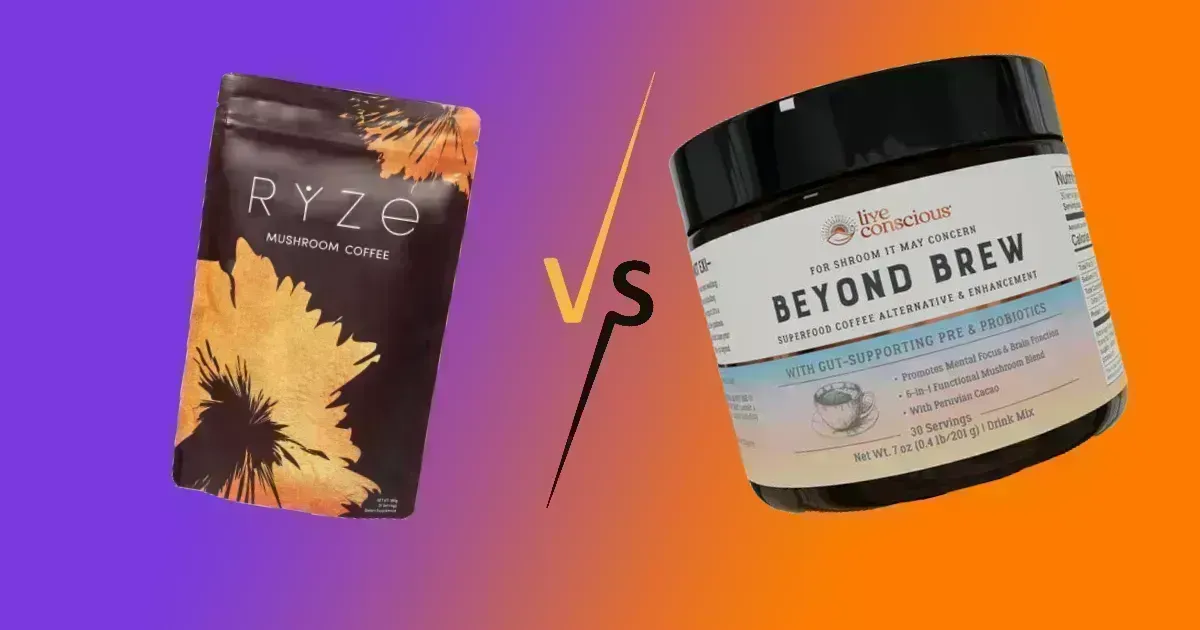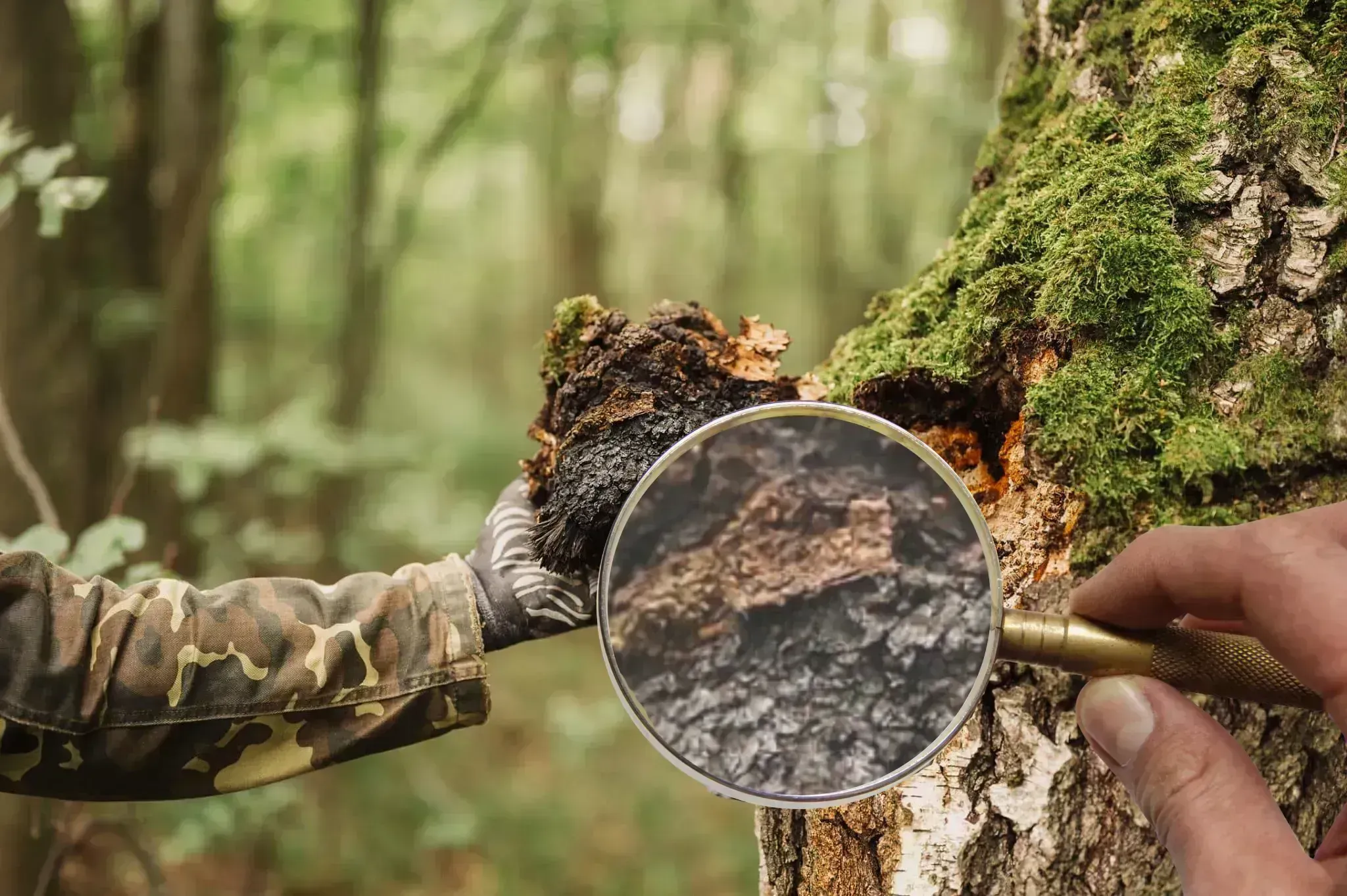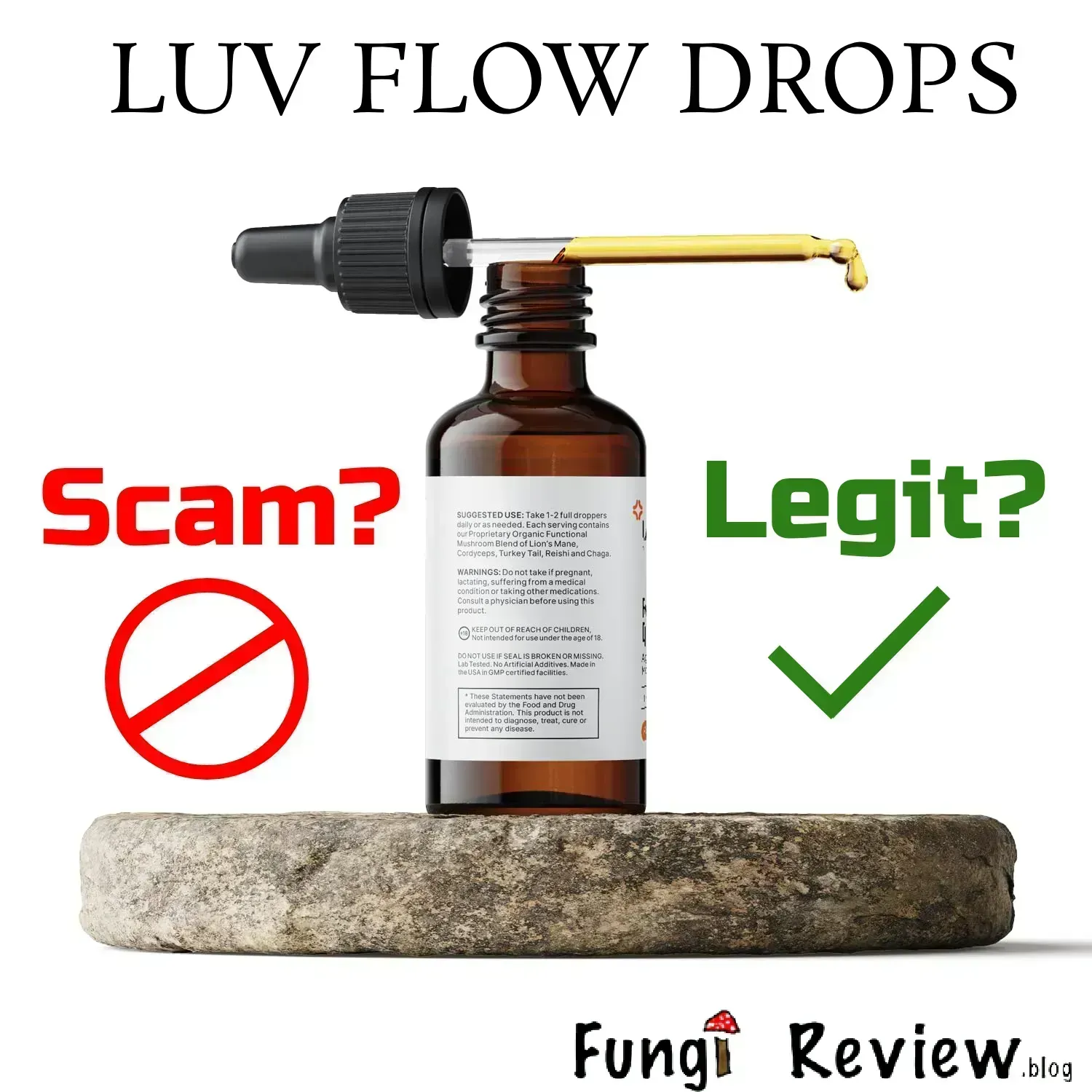When it comes to selecting high-quality mushroom supplements, the market can be overwhelming. With a myriad of products available, each claiming to offer the best benefits, it's easy to feel lost in the sea of choices. At Fungi Review, we believe that knowledge is power, and that’s why we’ve created this comprehensive checklist to help you navigate the world of mushroom supplements. This ultimate mushroom product checklist will empower you to make informed decisions, ensuring you choose products that are safe, effective, and worth your investment.
Why You Need a Mushroom Product Checklist
Before diving into the specifics of the checklist, it’s important to understand why such a tool is necessary. The mushroom supplement industry, while growing rapidly, is not as tightly regulated as many other sectors. This lack of regulation means that not all products on the market are created equal. Some may contain subpar ingredients, while others may be contaminated with harmful substances. A checklist serves as a practical guide, helping you to quickly assess the quality of a product before making a purchase.
Key Criteria for Evaluating Mushroom Products
When evaluating mushroom supplements, there are several key criteria to consider. These factors will help you determine whether a product is of high quality and worth your money.
1. Source of the Mushrooms
- Organic Certification: Always check if the mushrooms used in the supplement are organically grown. Organic certification is an indicator that the mushrooms should be free from synthetic pesticides, herbicides, and fertilizers, which can be harmful to your health. Although you shouldn't rely on any supplement that just says "organic," as any brand could honestly just slap that on there, and it could still contain heavy metals. Third-party testing is what should really determine if its 'organic' (See below)
- Geographical Origin: The source of the mushrooms is crucial. Mushrooms grown in polluted areas are more likely to absorb heavy metals. Look for products that specify the geographical origin of the mushrooms, ideally from regions known for their clean environment, such as parts of the United States, Canada, or Northern Europe or anywhere that isn't located in an urban area, which is most likely prone to air pollution.
2. Processing Methods
- Extraction Method: The extraction method used is a significant indicator of product quality. Hot water extraction is the most common method and is effective in extracting beta-glucans and other water-soluble compounds. Dual extraction, involving both water and alcohol, is necessary for mushrooms like Reishi and Chaga to extract both water-soluble and fat-soluble compounds. Make sure the label specifies the extraction method used.
- Temperature Control: High temperatures during processing can degrade the active compounds in mushrooms. Check if the product was processed at low temperatures to preserve the potency of its bio-active compounds.
3. Active Ingredients and Potency
- Beta-Glucans Content: Beta-glucans are the primary active compounds in mushrooms, known for their immune-boosting properties. A good mushroom supplement should list the percentage of beta-glucans on the label. Look for products with at least 20-30% beta-glucans.
- Additional Active Compounds: Depending on the type of mushroom, the product should also contain other active compounds such as triterpenes (for Reishi), cordycepin (for Cordyceps), or erinacines and hericenones (for Lion’s Mane). These should be clearly listed on the label with their respective concentrations.
4. Contaminant Testing
- Heavy Metals: As mushrooms are known to absorb heavy metals from their environment, it is crucial that the product is tested for contaminants such as lead, arsenic, cadmium, and mercury. These levels should be well below the safety thresholds set by regulatory bodies like the FDA.
- Pesticides and Herbicides: Even if a product is labeled organic, it’s important to verify that it has been tested for pesticides and herbicides. Look for lab reports that confirm the absence of these chemicals.
- Microbial Contaminants: The product should be free from harmful bacteria, yeasts, and molds. A lab report should confirm that the microbial counts are within safe limits.For more information on how to read lab reports on mushroom products and what to look out for check out our blog "Understanding Lab Reports On Mushroom Supplements"
5. Purity and Fillers
- No Fillers or Additives: High-quality mushroom supplements should be pure, containing only the mushroom extract or powder. Some manufacturers add fillers, starches, or other substances to bulk up the product, which can dilute its effectiveness. Always check the ingredient list to ensure there are no unnecessary additives.
- Verified Potency: The product should have its potency verified by a third-party lab, with results available to consumers. This verification ensures that the product contains the amount of active compounds it claims to have.
6. Label Transparency
- Clear Labeling: The label should provide clear, detailed information about the product, including the species of mushroom used, the part of the mushroom (fruiting body or mycelium), the extraction method, and the concentration of active compounds. Avoid products with vague or incomplete labels.
- Third-Party Testing Information: Reputable brands will include information about third-party testing on their labels or websites. This testing verifies the product’s quality and safety. Look for a link to the lab report or contact the company to request it.
7. Dosage Recommendations
- Realistic Dosage: The product should provide a realistic dosage recommendation that is based on research or traditional use. Be wary of products that suggest an unrealistically low dosage, as this may indicate that the product is not potent enough to be effective. A typical dose of mushroom extract is around 1-2 grams per day, depending on the specific mushroom and its intended use.
- Serving Size and Concentration: The serving size and concentration of the product should be appropriate for achieving the desired health benefits. Check the label to see how much of the active ingredient you’re getting per serving.
How to Use the Ultimate Mushroom Product Checklist
Now that you understand the key criteria for evaluating mushroom products, let’s put this knowledge into action with the ultimate mushroom product checklist. This checklist is designed to be a practical tool that you can use when shopping for mushroom supplements, whether online or in stores.
Step 1: Research the Brand
Before purchasing any mushroom supplement, start by researching the brand. Look for information about the company’s reputation, the quality of its products, and its commitment to transparency. Reputable brands will provide detailed information about their sourcing, processing methods, and testing procedures.
- Checklist Items:
- Does the brand provide detailed information about the sourcing and processing of its mushrooms?
- Is the brand transparent about third-party testing and lab reports?
- Does the brand have positive reviews from trusted sources or customers?
Step 2: Review the Product Label
Once you’ve chosen a brand, carefully review the product label. The label should provide clear, detailed information about the product, including the species of mushroom used, the part of the mushroom (fruiting body or mycelium), the extraction method, and the concentration of active compounds.
- Checklist Items:
- Does the label specify the species of mushroom and the part used (fruiting body or mycelium)?
- Is the extraction method clearly stated?
- Are the concentrations of beta-glucans and other active compounds listed?
- Is there information about third-party testing and lab reports?
Step 3: Check for Contaminant Testing
Contaminant testing is crucial for ensuring the safety of the product. Look for information about testing for heavy metals, pesticides, herbicides, and microbial contaminants. This information may be included on the label or provided in a third-party lab report.
- Checklist Items:
- Has the product been tested for heavy metals, pesticides, herbicides, and microbial contaminants?
- Are the contaminant levels below the safety thresholds set by regulatory bodies?
- Is there a third-party lab report available to verify the product’s safety?
Step 4: Assess the Purity of the Product
The purity of the product is an important factor in its effectiveness. Check the ingredient list for fillers, additives, or other substances that may dilute the potency of the mushroom extract.
- Checklist Items:
- Is the product free from fillers, additives, or other unnecessary ingredients?
- Is the product’s potency verified by a third-party lab?
- Does the product contain a high concentration of active compounds?
Step 5: Evaluate the Dosage Recommendations
The dosage recommendations should be realistic and based on research or traditional use. Be cautious of products that suggest an unrealistically low dosage, as this may indicate that the product is not potent enough to be effective.
- Checklist Items:
- Is the dosage recommendation realistic and based on research or traditional use?
- Does the serving size provide an adequate concentration of active compounds?
- Is the dosage appropriate for achieving the desired health benefits?
Practical Tips for Using the Checklist
To make the most of this checklist, here are some practical tips:
- Print the Checklist: Consider printing the checklist or saving it on your phone for easy reference when shopping.
- Compare Products: Use the checklist to compare different products and brands. This will help you identify the best option based on your specific needs.
- Ask Questions: Don’t hesitate to contact the brand if you have questions about the product. Reputable companies will be happy to provide additional information or clarify any concerns.
- Look for Certifications: Certifications like USDA Organic, Non-GMO Project Verified, and ISO-17025 lab accreditation are indicators of a brand’s commitment to quality.
- Stay Informed: The mushroom supplement industry is constantly evolving, so stay informed about new research, products, and trends. Regularly update your checklist based on the latest information.
The Role of Third-Party Testing in Your Checklist
One of the most critical aspects of the ultimate mushroom product checklist is third### The Role of Third-Party Testing in Your Checklist (continued)
One of the most critical aspects of the ultimate mushroom product checklist is third-party testing. This independent verification ensures that the product meets high standards for quality and safety, free from bias or conflicts of interest that might arise with in-house testing.
Why Third-Party Testing Matters
Third-party testing is conducted by independent laboratories that have no affiliation with the supplement manufacturer. This independence is crucial for ensuring that the test results are accurate and reliable. These labs analyze the product for its content of active compounds, the presence of contaminants, and overall purity. When a product has undergone third-party testing, it provides a strong level of assurance that what is on the label matches what is in the bottle.
- Checklist Items:
- Does the product label or website mention third-party testing?
- Is the third-party lab accredited (e.g., ISO-17025)?
- Are the lab reports readily available to consumers?
- Does the lab report confirm the levels of active compounds and the absence of harmful contaminants?
A Closer Look at Third-Party Labs
When evaluating mushroom supplements, you might come across products tested by well-known third-party labs such as ACS Laboratory and Scout Scientific. These labs are recognized for their rigorous standards and detailed reports, making them reliable sources for verifying product quality.
ACS Laboratory
ACS Laboratory specializes in natural product testing, offering comprehensive services for mushroom supplements. Their tests include analyses for active compounds like beta-glucans, as well as screenings for heavy metals, pesticides, and microbial contaminants. The lab is ISO-17025 accredited, which means it meets international standards for laboratory testing.
Scout Scientific
Scout Scientific is another reputable lab known for its detailed testing of mushroom supplements. They provide a thorough analysis of bio-active compounds and ensure that products are free from harmful substances. Like ACS Laboratory, Scout Scientific also holds ISO-17025 accreditation, ensuring the reliability of their results.
*Note* There are other third-party testing labs known for testing mushroom supplements; ACS Laboratory and Scout Scientific are good examples.
Final Checklist Recap: Ensuring Quality and Safety
To ensure you’re selecting the best mushroom supplements, use this final checklist as a quick reference guide:
- Sourcing: Are the mushrooms organically grown and sourced from a clean environment?
- Processing: Is the extraction method specified? Was low-temperature processing used?
- Active Ingredients: Are beta-glucans and other bio-active compounds listed with their concentrations?
- Contaminants: Has the product been tested for heavy metals, pesticides, and microbial contaminants?
- Purity: Is the product free from fillers and additives? Is its potency verified by a third-party lab?
- Labeling: Is the label clear, transparent, and complete?
- Third-Party Testing: Has the product undergone independent third-party testing, with results available to consumers?
- Dosage: Does the recommended dosage align with research and traditional use? Is the serving size appropriate for the desired health benefits?
- Marketing Tactics: Investigate the marketing tactics the brand is using. Do they show research and reports to back up the claims they advertise?
- Understand Your Body! Supplements affect everyone differently; learn to understand how your body reacts to new supplements and talk to a doctor before!
Conclusion: Your Path to Informed Choices
By following this ultimate mushroom product checklist, you can confidently navigate the mushroom supplement market, making informed choices that prioritize your health and well-being. Remember, not all mushroom supplements are created equal, and taking the time to evaluate products carefully will help you select the best options available.
For more in-depth information on specific aspects of mushroom supplement quality, be sure to explore the other blogs in our Mushroom Quality Guide series. These resources provide further insights into topics such as understanding lab reports, the differences between fruiting bodies and mycelium, and how to identify trustworthy mushroom brands.
Related Blogs:
- Understanding Lab Reports for Mushroom Products: Learn how to read and interpret lab reports to ensure product quality.
- Fruiting Body vs. Mycelium: What’s the Difference?: Discover the key differences and which type is best for your needs.
- Mycelium on Grain: What You Need to Know: Understand the implications of grain-based mycelium in mushroom supplements.
- How to Identify Trustworthy Mushroom Brands: Find out how to recognize and select brands you can trust.
Armed with this knowledge, you’ll be able to choose mushroom supplements that truly deliver on their promises, helping you achieve better health and wellness through the power of mushrooms.
Citations: (Read these citations for more thorough research)
-
Understanding Mushroom Supplement Labels:
- Source: Moss, M. (2020). How to Read a Supplement Label: A Layman’s Guide. Verywell Health. Link
-
Importance of Third-Party Testing:
- Source: National Institutes of Health (NIH) Office of Dietary Supplements. (2021). Dietary Supplements: What You Need to Know. Link
- How to Read Supplement Labels:
- Source: Healthline. (2021). How to Read Supplement Labels: A Guide for Smart Shoppers. Link
-
Benefits of Beta-Glucans in Mushroom Supplements:
- Source: Schepetkin, I. A., & Quinn, M. T. (2006). Botanical polysaccharides: Macrophage immunomodulation and therapeutic potential. International Immunopharmacology, 6(3), 317-333. Link
-
Heavy Metal Contamination in Supplements:
- Source: U.S. Food & Drug Administration (FDA). (2021). Lead in Food, Foodwares, and Dietary Supplements. Link
-
Choosing High-Quality Mushroom Supplements:
- Source: Mayo Clinic. (2020). Dietary Supplements: What to Know Before You Buy. Link
-
Understanding Mycelium vs. Fruiting Body:
- Source: Hobbs, C. (2017). Medicinal Mushrooms: The Essential Guide. Medicinal Mushrooms for Health. Link
-
Bioavailability and Extraction Methods:
- Source: Memorial Sloan Kettering Cancer Center. (2021). Medicinal Mushrooms. Link
-
Evaluating Claims Made by Supplement Brands:
- Source: National Center for Complementary and Integrative Health (NCCIH). (2021). Using Dietary Supplements Wisely. Link
-
Ensuring the Safety of Mushroom Supplements:
- Source: Harvard Health Publishing. (2021). The Truth About Supplements: 5 Things You Should Know. Link





